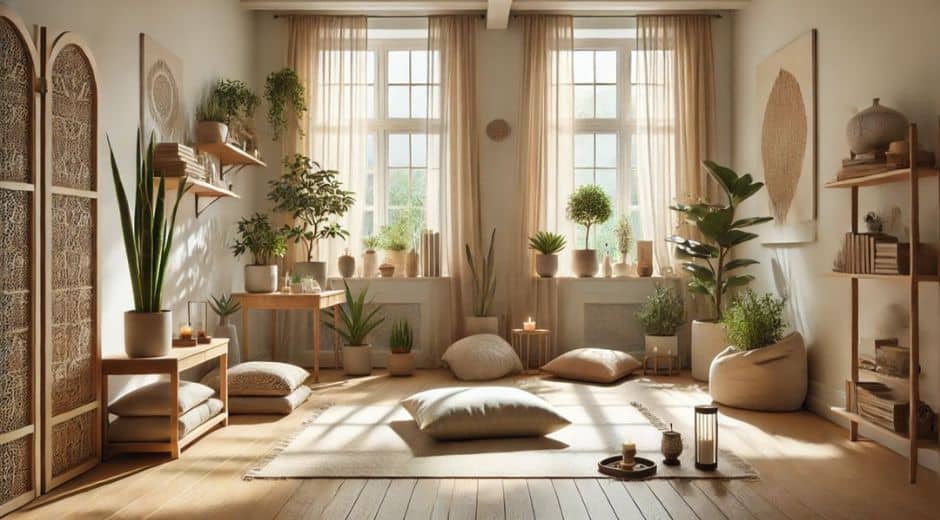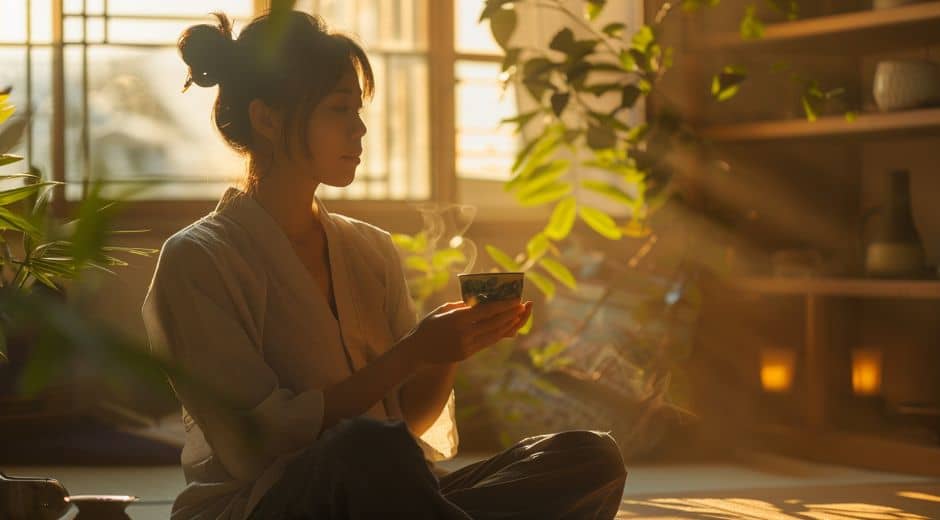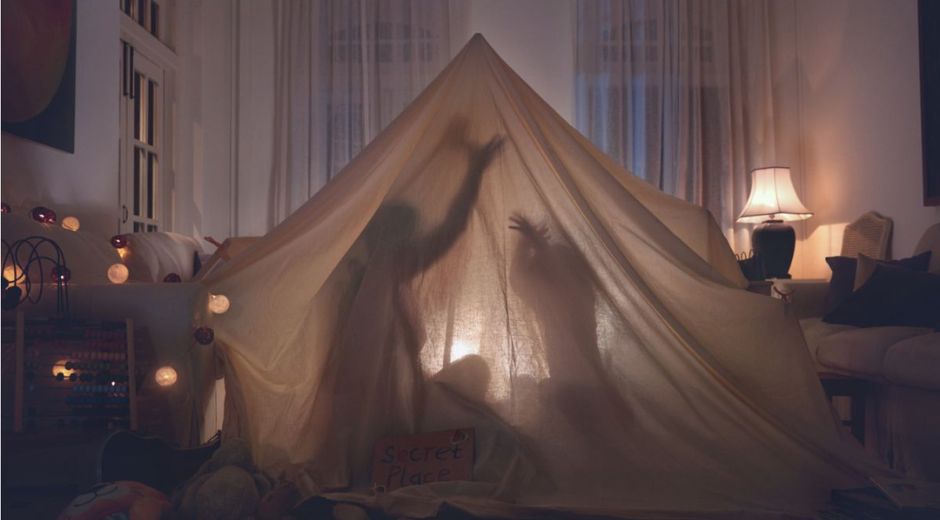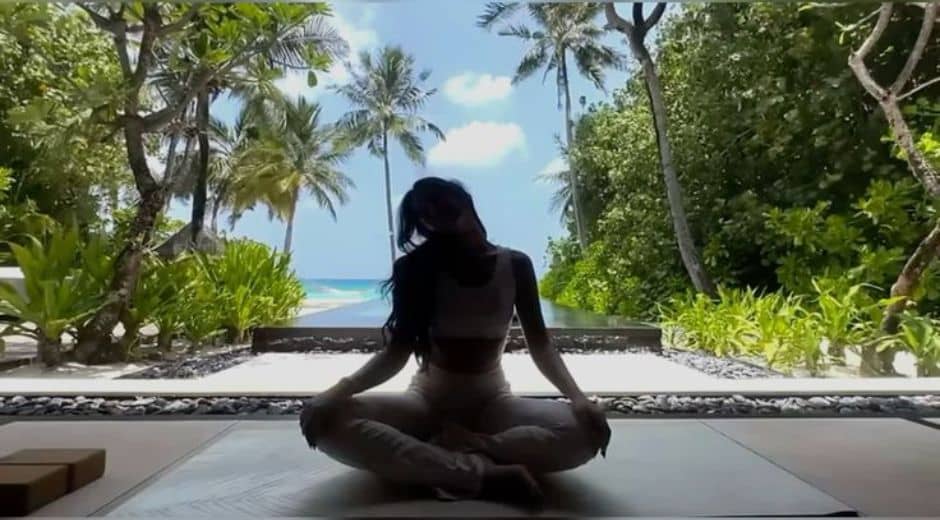Sanctuary at Home: Creating Peace and Balance
Sanctuary at Home: Creating Peace and Balance
In today’s fast-paced world, our homes are more than just living spaces—they are extensions of our inner world. Transforming your home into a Sanctuary at Home means crafting an environment that promotes calm, clarity, and emotional well-being. Every element, from lighting to furniture, colors to textures, can influence mood, focus, and overall mental balance.
Designing a Sanctuary at Home isn’t about luxury or trends; it’s about intentionality. It’s about creating spaces that support rest, creativity, and mindful living. Whether you have a small apartment or a spacious house, these principles can guide you in cultivating a serene environment that nurtures both body an
1. Decluttering: The First Step to Calm
The journey to a Sanctuary at Home begins with decluttering. Clutter can create visual noise, increasing stress and distracting the mind. Begin by evaluating each item in your space: does it serve a purpose, bring joy, or reflect your values?
Organize your belongings thoughtfully. Use baskets, shelves, and storage solutions to create open, airy spaces. A decluttered environment not only fosters tranquility but also encourages mindfulness and intentional living. For inspiration on thoughtful home organization, Metro Property Homes offers practical design insights that help maximize calm in any space.
2. Choosing the Right Colors
Colors play a pivotal role in shaping your home’s atmosphere. Soft, neutral tones like beige, muted greens, or pastel blues evoke calmness and relaxation, making them ideal for a Sanctuary at Home.
Accents of warmer hues, such as soft peach or gentle terracotta, can add warmth and coziness without overwhelming the senses. When choosing a color palette, consider the emotional impact of each shade. Natural tones that reflect earth, water, or sky often foster a sense of balance and serenity.
3. Lighting for Mood and Mindfulness
Natural light is a cornerstone of a Sanctuary at Home. Large windows, sheer curtains, and strategically placed mirrors can maximize daylight and uplift the spirit. Exposure to natural light regulates circadian rhythms, enhances mood, and increases productivity.
In areas where natural light is limited, incorporate soft, ambient lighting. Warm-toned bulbs, lamps, and string lights create a soothing atmosphere. Adjustable lighting, such as dimmers, allows you to modify intensity for reading, relaxation, or meditation. Thoughtful lighting design transforms any home into a tranquil retreat.
4. Furniture and Layout
The arrangement of furniture greatly influences the flow and energy of a space. For a Sanctuary at Home, prioritize comfort, simplicity, and openness. Avoid overcrowding rooms with bulky furniture or unnecessary items.
Select pieces that are both functional and aesthetically pleasing. Soft chairs, ergonomic desks, and modular furniture encourage relaxation and flexibility. Creating clear pathways and open spaces allows energy to circulate freely, fostering a sense of peace and order.
5. Natural Elements and Indoor Plants
Bringing nature indoors is essential for cultivating a Sanctuary at Home. Plants not only purify the air but also provide visual and emotional benefits. Greenery can reduce stress, enhance focus, and connect you with the natural world.
Incorporate plants of varying sizes, from tabletop succulents to tall floor plants. Combine natural materials like wood, stone, and cotton for furniture, rugs, and decor. This connection to nature promotes mindfulness, grounding, and overall well-being. For curated ideas and products to elevate your home’s natural aesthetic, explore StyleRadarPoint.
6. Creating Mindful Spaces
Designate specific areas in your home for mindfulness and relaxation. A reading nook, meditation corner, or yoga space helps reinforce intentional living. Decorate these areas with soft cushions, calming colors, and personal objects that inspire reflection and gratitude.
Incorporating soundscapes, such as soft music, nature sounds, or white noise, can enhance the sensory experience. These mindful spaces encourage regular practice of meditation, journaling, or quiet contemplation, key components of a Sanctuary at Home.
7. Sensory Considerations
A Sanctuary at Home engages the senses in ways that soothe and balance. Scents, textures, and even subtle sounds influence how we feel in our surroundings. Essential oils, scented candles, or incense can promote relaxation and elevate mood.
Soft textures in blankets, rugs, and cushions provide tactile comfort, while gentle water features or ambient sounds enhance serenity. By intentionally crafting the sensory environment, you create spaces that nurture calm and clarity.
8. Personalization and Meaning
Your home should reflect who you are, making personalization key to a Sanctuary at Home. Incorporate artwork, photographs, and objects that evoke positive memories or inspire you.
Avoid cluttering with items that carry negative associations or distract from peace. The goal is a space that feels authentically yours—a place where your mind and spirit can rest and recharge.
9. Practical Tips for Daily Maintenance
Maintaining a Sanctuary at Home requires small, consistent habits:
Clean and organize regularly to prevent clutter from building up.
Rotate decor seasonally to keep spaces fresh and inspiring.
Limit unnecessary digital distractions in key relaxation areas.
Practice gratitude by acknowledging the comfort and beauty of your surroundings.
Over time, these habits enhance the sense of peace and mental clarity that a thoughtfully designed home provides.
10. Combining Conscious Living with Design
A Sanctuary at Home aligns perfectly with conscious living principles. Thoughtful choices about materials, furniture, and decor support sustainability and mindfulness. From eco-friendly products to energy-efficient lighting, every decision can reflect intentional, responsible living.
Integrating conscious living practices into your home design amplifies well-being, strengthens focus, and fosters a deeper connection to your environment. To explore practical guides and tips for mindful living, visit FocusMindFlow for expert insights.
Conclusion: Your Home as a Retreat
Transforming your living space into a Sanctuary at Home is a journey of intentionality, mindfulness, and self-care. By decluttering, incorporating natural elements, optimizing lighting, and creating mindful spaces, you cultivate calm, clarity, and balance in your everyday life.
Whether through a cozy reading nook, indoor greenery, or carefully selected decor, your home can become a refuge from the fast-paced world outside. With thoughtful design and conscious choices, a Sanctuary at Home not only enhances your living space but also supports emotional resilience, mental clarity, and overall well-being.
For inspiration, design ideas, and resources on creating mindful, beautiful homes, explore Metro Property Homes and StyleRadarPoint. To dive deeper into conscious living practices, visit FocusMindFlow and start transforming your space today.
Focus Flow Forward

Art of Slow Living: Finding Peace in Everyday Moments
Discover the Art of Slow Living — a mindful approach to everyday life that emphasizes presence, balance, and intentional choices. Learn how small shifts in routines can cultivate peace, clarity, and lasting well-being.

Energy Reset: Aligning Mind, Body, and Intention
Discover the transformative power of an Energy Reset — a holistic approach to realigning mind, body, and intention. Learn practical rituals and mindful practices to restore balance, clarity, and inner harmony in your everyday life.

Journaling Your Inner Flow: Daily Prompts for Clarity
Discover the power of Journaling to unlock your inner flow. Daily prompts and mindful writing practices help clarify thoughts, reduce stress, and cultivate focus and creativity.

Nature as a Reset: Forest Walks and Mindful Breathing
Reconnect with Nature through mindful forest walks and breathing exercises. Discover how these simple rituals reset your mind, enhance focus, and restore calm in daily life.











